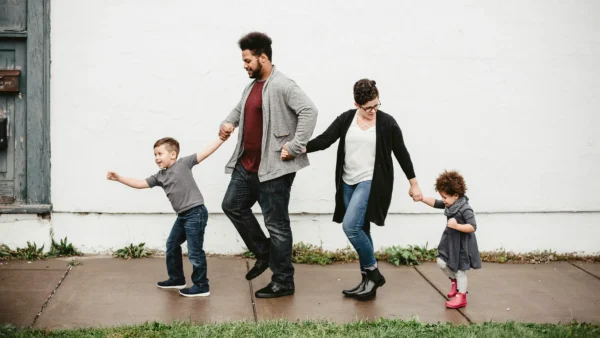People
Anyone who uses design to complete an activity.
Without people, there is no interaction with design. After all—for design objects to be created or used, people must be part of the equation. The more clearly we understand, involve, and consider people in experience design, the more effective and relevant our research and creations will be. As components in experience design scenes, people are the most difficult to study because they are so complicated.
People are Rational
People do things that make sense. They watch out for danger and turn the lights off when they leave the room. They spend only as much money as they have, and they show up to work on time. People think critically, weigh options, and act on available information. The logic that underpins human decision-making ensures trains run on time. It means that as designers, we can predict what people will do with decent certainty because they act rationally.
People are Irrational
Sometimes, people aren’t so rational. Have you ever decided to stay out late at a party with friends a little later than you should have, and the next day at work was tough because of lost sleep? Perhaps you bought something that cost a little more than you could afford (okay, a lot more). People do things that aren’t logical but are driven by other factors like emotional mood or cultural traditions. People can be irrational—inspired by things that don’t make sense. There’s always a motivation behind these actions, and deciphering those motivations often gives us a peek into how people make meaning of the world around them.
People are Unpredictable
People make rational decisions at one moment; the next moment, they do something completely unexpected and unwarranted. That’s what makes researching people fun for experience designers. We can not know what a person is thinking at all times. Philosophy, psychology, and computer science have worked for centuries to figure out how to predict people. Algorithms are getting close, but they’re not quite there. People are elusive and continue to be. It’s hard to define and categorize them. People always surprise.
People Matter
People are experiencers in experience design scenes. The success of a design is measured by how well they can use it and how effectively it aligns with a person’s needs, values, and preferences. User experiences hinge on whether the design is useful, usable, and desirable (Sanders, 1992). When design outcomes consider experience-level factors, products, services, and systems can become meaningful, valuable, and empowering.
People: Self and Relationships
People cannot live on an island—they need relationships to thrive. At the same time, people are unique individuals with many qualities that make them wonderfully interesting and special. I recognize this by highlighting these factors in two variations.
We can think of people’s factors at various levels within the above groupings.
Characteristics of the Self
People’s characteristics, such as their physical size, define concerns that matter to them. Depending on their circumstances, people behave in specific ways. When designers examine a wide array of people’s characteristics and the ways people behave, nuanced discoveries about how and what to design emerge.
Characteristics of the Social
People are physical and relational beings. People were born with physical characteristics. These characteristics change over time as a person matures and when they modify their physical qualities. People learn about themselves and the world around them through relationships. They gain knowledge, develop responsibilities, acquire behaviors, and make decisions through contact with others and the things other people produce.
Both physical and relational characteristics define people’s observable qualities. They can also act as barriers—preventing a person from completing activities or being accepted by others.
Dynamic Factors
Human behavior can vary widely, even in social settings with pretty straightforward “rules.” When designers research people for design, they discover people’s habits. They can also identify people’s physical limitations brought about by injury or age. Even something as mundane as “doing a puzzle” can have many behavioral layers.
People behave differently depending on where they are and the activities they are trying to complete. Wedding guests at a reception often dance. Some dancers are more conservative—choosing dances with step patterns like the two-step or a waltz. Other guests get funky and flail any way they like. Still, other guests may decide not to dance. When people use products, services, and systems, they behave in ways designers intended and sometimes in ways that designers didn’t quite expect.
People Make Meaning
People view the world around them and define themselves differently. Experiences are phenomenological and constructed in people’s minds. People make sense of experience design scenes internally and form opinions of these experiences through reflection. Because human experiences are perceived and internally constructed, meaning-making can potentially override or at least significantly color other factors of experience design scenes. Factors in the meaning-making theme address people’s view of the world and their inner selves. Worldviews and social structures shape individual identities, and factors within meaning-making reflect this relationship between the “outside” and the “inside.” (Berger and Luckmann, 1990).
The XDF meaning-making theme compiles factors from various disciplines to answer how people developed and their beliefs. These factors are social—collected from empirical research that describes how people are formed based on their interactions with people, objects, and contexts. Meaning-making directs designers’ gaze toward how people learn who they are and how they relate to others in society.
People are Motivated at Various Levels
Experiences happen in a sequence that mimics dramatic structure familiar in storytelling. A person’s experience when sending an email starts by navigating to Gmail using a web browser. Next, they create a new email and enter address information. They then write a subject and the body of the message. The activity concludes when the sender clicks “send” and closes Gmail. Using Gmail is a pretty straightforward process.
However, not all Gmail experiences are the same. If a person is writing a breakup email to a boyfriend, or if they are using assistive devices because they are blind, the Gmail user experience will be very different—the story will include different twists and turns. Stories are seldom the same for all people in all experience design scenes. When designers embrace their role in interpreting and designing stories, they can facilitate usage scenarios in ways that match actors’ goals.
All storytelling factors are specific to when a person uses a design outcome. These factors center on the use scenario itself—completing a goal by doing an activity. Use these factors when examining ways people use design.
People Factor Groups




